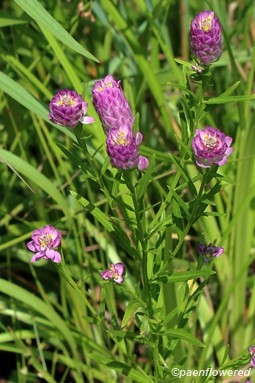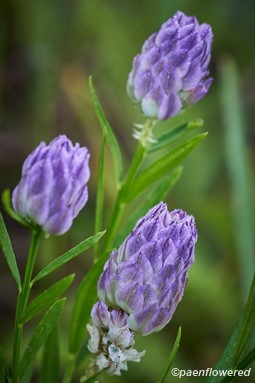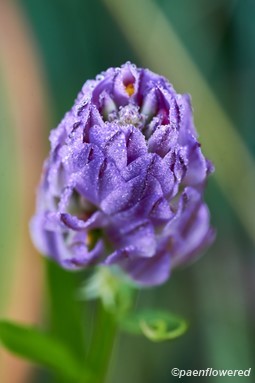Polygala sanguinea
Polygala sanguinea field milkwort
The milkwort family of plants mostly have clover-like flower heads and linear leaves. Generally they are small and you have to get close to the ground to get a good look at them. The field milkwort grows 6-15 inches high in fields and meadows throughout the eastern half of North America.
The flower heads are oblong and normally rose-purple in color. Individual flowers are densely packed and overlapping and are about ¼ inch long. Sometimes the flowers are greenish or whitish, especially at the base of the cluster. On close examination the individual flowers are fairly complex in structure. Two large sepals, three small sepals and three small petals combine to form a tubular flower with wings. Bracts support the individual flowers and persist on the plant after the flowers drop off. There are also concealed fertile flowers beneath the ground surface.
Field milkwort blooms from June to October. The alternate leaves are long and thin and scattered along the stem. The common name comes from the old belief that eating this herb would increase milk production in cows or for nursing mothers. When crushed, the root gives off a wintergreen odor. It is sometimes called the purple milkwort, blood milkwort or candy root.
Habitat & Range
Frequent in open areas with moist, acidic soils.
Present throughout the state.
| EMP: | FAC |
|---|---|
| NCNE: | FACU |
Phenology
Flowers late June to early October.
Plant Codes
S-rank: No rank
G-rank: G5 (Secure)







Comments
Have you spotted this plant in your area? We'd love to hear about your experience! Share your comments or questions about the plant below. Comments are moderated before posting.